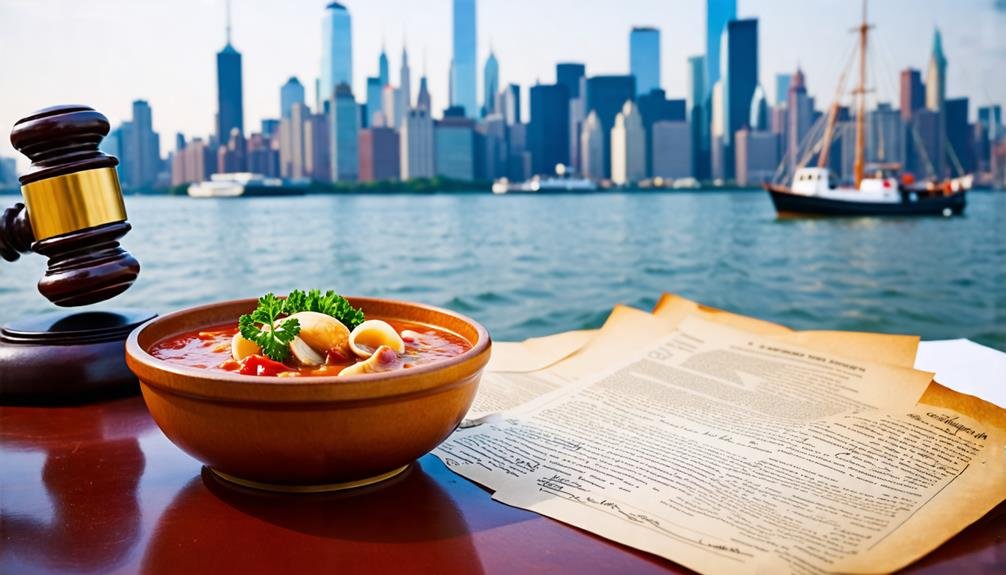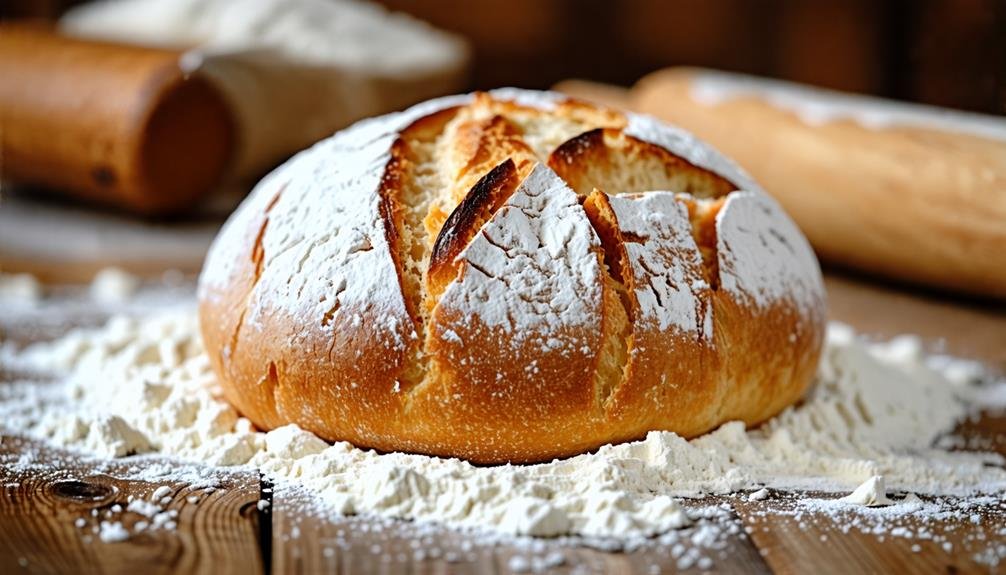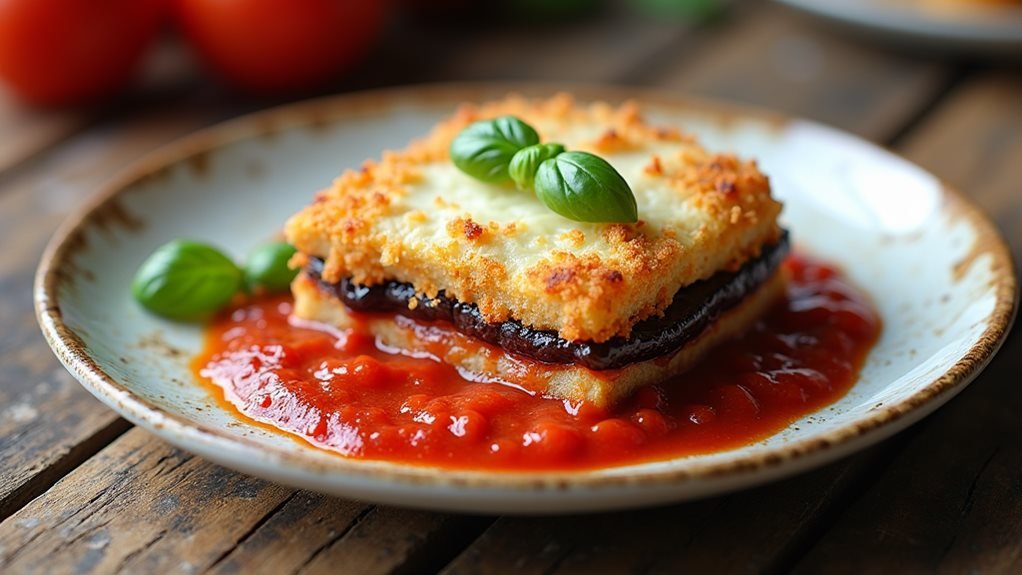The fascinating story of Manhattan clam chowder's brief illegality revolves around Cleveland Sleeper's 1939 proposal to outlaw tomatoes in the dish. This initiative sought to safeguard Maine's culinary heritage and resulted in creative consequences, such as the notorious suggestion of plunging offenders in clams at high tide! Public outcry followed, igniting a confrontation between culinary customs and social equity. Ultimately, the issue was settled in a festive cooking competition, underscoring the significance of varied culinary expressions. This tale not only mirrors local identity but also the changing narrative of our cherished chowder. Intrigued by more delectable turns in this narrative?
The Origin of Clam Chowder
Clam soup traces its roots to the 1700s. French and British settlers in New England likely introduced creamy versions of this dish. Over time, this rich, flavorful chowder evolved, integrating local ingredients and culinary practices. The history of clam soup reveals an intriguing journey, characterized by recipe adaptations and regional pride associated with each variation.
The classic New England clam chowder is a creamy delight. However, it is essential to acknowledge the rise of Manhattan clam chowder, which incorporates tomatoes, igniting debates about its authenticity. At one point, Maine laws deemed this tomato-based variant illegal, reflecting efforts to protect traditional recipes. This proposed prohibition underscored the conflict between culinary tradition and innovation, highlighting the strong emotional connections people have to their food heritage.
As clam soup continues to evoke passion and discussion, it stands as a symbol of regional identity, individual freedom, and the rich diversity of American cuisine. Whether one favors the creamy New England style or the tomato-infused Manhattan version, clam soup invites everyone to enjoy its robust flavors and the stories behind its many recipes.
Manhattan Vs. New England Chowder
A culinary rivalry exists between Manhattan and New England clam chowder, each representing distinct regional flavors and traditions. New England clam chowder is a creamy delight, rich with Oscar Mayer bacon, Idaho potatoes, and fresh clams, enveloped in a velvety white base. It's the warm embrace of New England winters, inviting you to savor each spoonful. Meanwhile, Manhattan clam chowder offers a bold contrast, with its tangy tomato base and a lighter, thinner consistency. Enriched by a medley of vegetables, including sweet carrots and vibrant bell peppers, it embodies the lively spirit of urban culinary innovation.
Both chowders share a common foundation of clams, bacon, potatoes, onions, and celery, yet they vary spectacularly in execution. New England chowder is comfort food at its finest, while Manhattan chowder dares to challenge tradition with its zesty flair. This spirited debate is not merely about ingredients; it reflects the cultural identities and pride of their respective regions. Whether you lean towards the creamy comfort of New England or the zesty excitement of Manhattan, one thing is clear: each chowder tells a story that celebrates freedom of choice in the culinary arts. Enjoying either is a delicious adventure worth exploring!
Cleveland Sleeper's Legislative Efforts

Cleveland Sleeper, a passionate advocate for Maine's culinary legacy, proposed a series of laws aimed at prohibiting tomatoes in clam chowder. His commitment to the traditional New England dish illustrates a broader fight for cultural identity amidst rapid societal changes. Sleeper argued that the inclusion of tomatoes compromised the dish's authenticity and jeopardized the essence of Maine's culinary customs.
However, his legislative efforts faced skepticism and ridicule. The suggestion of punishing violators by submerging them in a barrel of clams at high tide was viewed as impractical, leading to the failure of the proposals to reach a legislative vote. Despite this setback, Sleeper's initiatives attracted considerable media attention, highlighting the passionate debate surrounding regional food identity.
The conflict ultimately resolved not through legislation but through a lively cook-off between chefs specializing in New England and Manhattan clam chowder. This event, judged by the state governor, celebrated culinary diversity while respecting the flavors that characterize Maine's cuisine. Sleeper's campaign underscored the significance of food as a key element of cultural identity, reminding everyone of the rich variety of culinary traditions we hold dear.
The 1939 Proposed Ban
In 1939, legislator Cleveland Sleeper proposed a contentious law to prohibit tomatoes in clam chowder, sparking a debate over Maine's culinary heritage. This daring legislative measure aimed to safeguard the state's culinary identity, threatened by the growing favor of Manhattan clam chowder. The proposed ban ignited fervent discussions among chefs, food lovers, and locals, as it challenged the fundamental nature of honoring clams in New England cuisine.
Sleeper's proposal included an unusual penalty for violators: immersion in a barrel of clams during high tide, a notion that elicited both skepticism and humor. Although the excitement surrounding the bill was palpable, it ultimately failed to reach a vote, underscoring the challenges of reconciling cultural pride with evolving culinary trends.
The conflict found resolution in an unexpected fashion—a cook-off featuring chefs from both chowder traditions, underscoring the significance of community and heritage over arbitrary restrictions. While New England's creamy chowder triumphed in this culinary contest, the discourse illuminated the rich tapestry of regional identities, demonstrating that cuisine, much like liberty, flourishes best in its many diverse expressions.
The Inhumane Punishment

The proposed punishment for violating the ban on Manhattan clam chowder was as bizarre as it was inhumane: offenders would be required to dig up a barrel of clams at high tide. This draconian measure sparked outrage among the public, raising questions about the fairness and practicality of such a penalty. As the legal implications of this proposed ban unfolded, it became clear that the clash between culinary traditions was not only a matter of taste but also one of social justice.
Proposed Punishment Details
A proposed consequence for offenders of the intended prohibition on Manhattan clam chowder involved the seemingly harsh requirement of digging up a barrel of clams during high tide. This severe measure, introduced in the late 1930s by Maine legislator Cleveland Sleeper, incited outrage and disbelief among food enthusiasts and advocates for personal freedom. The notion that individuals could face such an absurd punishment for their chowder preferences underscores a significant misunderstanding of individual liberty and culinary variety.
Picture the challenge of wading into the frigid, relentless ocean, grappling with the erratic tides while attempting to comply with an arbitrary penalty! This peculiar mandate would not only inflict physical difficulty but also serve as a testament to the extremes lawmakers might reach to impose their culinary tastes. The backlash against this proposed punishment highlighted that cuisine, much like culture, flourishes on diversity and personal choice.
Ultimately, this heavy-handed tactic did not resonate with the populace, and the bill never progressed to a legislative vote. Instead, the conflict was resolved in a far more democratic fashion—a friendly cook-off that celebrated the uniqueness of both chowder varieties, allowing culinary freedom to triumph.
Public Reaction Overview
Public outcry emerged swiftly in response to the proposed inhumane punishment of clamming at high tide, reflecting widespread disapproval of such an extreme measure against culinary preferences. Citizens and food enthusiasts were astonished that lawmakers would consider such a harsh approach to a simple dish. The notion of penalizing individuals for their choice of chowder ignited a fervent debate about personal freedoms and the right to enjoy diverse culinary traditions.
Social media platforms and local forums buzzed with passionate discussions, emphasizing the absurdity of legislating taste. Many argued that the proposed punishment not only disregarded individual choice but also threatened the rich tapestry of regional cuisine. Chefs, food lovers, and advocates for culinary diversity rallied together, calling for a celebration of clams in all forms—whether nestled in creamy Legal Sea Foods New England chowder or floating in the vibrant tomato base of Manhattan clam chowder.
Ultimately, the proposed ban and its accompanying punishment were viewed as a misguided attempt to impose culinary conformity. The fervor surrounding this issue underscored a collective desire for freedom in food choices, highlighting the importance of celebrating rather than restricting the diverse flavors that define our culinary heritage.
Legal Implications Explored
Legislative proposals that suggest harsh penalties, such as the idea of harvesting clams at high tide, raise significant ethical and legal concerns regarding the enforcement of culinary regulations. The proposed ban on Manhattan clam chowder in Maine, driven by Cleveland Sleeper's desire to protect regional identity, crossed into an absurd realm when it proposed such a severe punishment for culinary preferences. This proposal not only revealed the extremes to which lawmakers might go to uphold tradition, but also the moral implications of enforcing punitive measures that could be perceived as cruel.
In a society that values freedom and individual choice, the concept of regulating taste through punitive means is not only impractical but also unjust. Culinary diversity, which includes various dishes from different cultures, should be celebrated, not stifled by outdated laws. Such measures risk alienating communities and suppressing creativity, ultimately leading to a culinary landscape that lacks vibrancy. The resolution through a friendly cook-off among chefs emphasizes the importance of dialogue and respect over punitive legislation. By embracing culinary diversity, we reaffirm our commitment to freedom, celebrating the rich tapestry of flavors that define our cultural heritage.
Media Attention and Public Reaction
The debate over the proposed ban on Manhattan clam chowder captured media attention, drawing significant public interest and sparking lively discussions about culinary identity in Maine. Newspapers and radio stations explored the controversy, vividly illustrating the conflict between traditional New England chowder and the tomato-based Manhattan variant. This coverage highlighted the significance of regional pride and ignited passionate conversations among chefs, home cooks, and food enthusiasts.
Public reaction varied from confusion to amusement, as many questioned the feasibility of enforcing such a ban. The notion of punishing offenders by plunging clams at high tide only fueled the public discourse. Social media platforms and local forums buzzed with users sharing their chowder preferences, fostering a sense of community around the issue.
Ultimately, the proposed legislation became a cultural symbol, reminding everyone of the rich tapestry of American cuisine. The ensuing chowder cook-off, featuring both styles, transformed a contentious debate into a festive occasion, showcasing the diverse flavors that characterize Maine's culinary scene. This energetic engagement underscored the enduring affection for chowder, regardless of its variation.
Cultural Identity at Stake

The clash between Manhattan clam chowder and New England clam chowder exemplifies the battle to maintain Maine's culinary heritage amidst broader American food traditions. This disagreement transcends mere ingredients; it reveals profound concerns regarding state pride and cultural roots. As Maine endeavors to strengthen its gastronomic legacy, the proposed prohibition on Manhattan clam chowder highlights apprehensions about cultural erosion.
- Culinary Tradition: New England clam chowder embodies the authentic flavors of Maine.
- State Pride: The chowder debate symbolizes regional identity and local customs.
- Cultural Safeguarding: Initiatives to ban Manhattan chowder aim to defend Maine's distinctive culinary character.
- Community Engagement: The controversy sparked enthusiastic conversations among residents, chefs, and legislators.
Ultimately, the clam chowder debate emphasizes the significance of culinary traditions in shaping cultural identity. In the diverse landscape of American cuisine, every dish narrates a story, and the lasting affection for New England chowder pays homage to Maine's enduring spirit. This light-hearted debate highlights the deep connections we forge through food.
The Cook-Off Resolution
The resolution of the clam chowder dispute culminated in an exciting culinary face-off that captivated both chefs and spectators alike. With the state governor serving as the judge, the competition not only highlighted the unique qualities of New England and Manhattan chowders but also emphasized the pride each region holds in its culinary traditions. Ultimately, the outcome of this spirited event solidified New England chowder's reputation, showcasing the passion and creativity behind each bowl served.
Culinary Face-Off
In a spirited attempt to settle the heated debate over chowder varieties, a public cook-off was staged, featuring New England clam chowder and Manhattan clam chowder. This culinary event celebrated two storied traditions, each aiming for culinary excellence. Chefs from both camps showcased their finest recipes, revealing the distinct flavors and ingredients that characterize their chowders.
The energy was palpable as food enthusiasts gathered to witness this flavorful face-off, emphasizing the essence of culinary freedom. Key components of the cook-off included:
- A selection of fresh produce, from Littleneck clams to ripe tomatoes, and creamy dairy to aromatic spices.
- Dedicated chefs passionately championing the heritage and authenticity of their chowders.
- A varied audience, embodying supporters from both sides of the chowder spectrum.
- An inviting atmosphere filled with joy, excitement, and tantalizing scents.
In the end, this cook-off not only resolved a longstanding rivalry but also cultivated an appreciation for both chowder variations, reminding all that culinary diversity is a cherished gem. The result was a delicious affirmation of the freedom of choice in the realm of gastronomy.
Governor as Judge
The governor stood as a central figure at the cook-out, deciding the outcome of the chowder contest by evaluating the rival recipes. The gathering represented not just a culinary showdown, but a vibrant expression of cultural heritage and personal choice. As the chefs crafted their unique clam chowders—one classic and creamy, hailing from New England, and the other zesty and tomato-infused from Manhattan—the atmosphere buzzed with excitement.
The governor's position transcended mere ceremony; it encapsulated the spirit of democracy, allowing the community's tastes to emerge through an equitable and flavorful competition. With each spoonful, the governor considered the virtues of tradition alongside modernity, mirroring the ongoing quest for culinary authenticity. This cook-out celebrated variety, encouraging everyone to partake in a conversation that surpassed regional loyalties.
As the tasting progressed, onlookers cheered for their preferred chowder, enjoying the unity of the occasion. The cook-out became a moment to connect rather than separate, demonstrating that even in gastronomy, we can discover shared interests. Ultimately, it served as a homage to the liberty of culinary creation, enjoyment, and respect for diverse gastronomic traditions, one bowl of chowder at a time.
Outcome of Competition
Judges at the cook-off crowned New England clam chowder as the champion, affirming the state's rich culinary heritage amid legislative hurdles. This spirited contest highlighted the chefs' talents and the cultural identities embodied by each chowder variety. The result represented a victory for tradition, celebrating the deep flavors and historical significance of New England clam chowder.
The cook-off transcended a mere food competition; it became a celebration of culinary freedom for those who cherish their regional dishes. The event fostered community spirit, uniting food lovers across different chowder preferences.
- Culinary Heritage: Safeguarding New England's diverse gastronomy.
- Community Connection: Food as a bridge among varied groups.
- Cultural Significance: Each chowder shares its unique narrative.
- Local Governance Role: The governor's involvement underscored the importance of state leadership.
Ultimately, the cook-off quelled the legislative controversy and reignited appreciation for both chowder varieties, inspiring everyone to embrace their culinary liberties.
The Legacy of the Dispute

The legacy of the Manhattan clam chowder debate symbolizes regional pride and culinary identity, showcasing the significant cultural differences between New England and Manhattan variations. This dish has ignited passionate discussions, with each group vigorously defending its version of chowder. The proposed prohibition on Manhattan clam chowder not only highlighted the culinary divergence but also fostered a sense of community among those who value their local flavors.
Currently, the rivalry between these two chowder types flourishes, with eateries and home cooks proudly showcasing their interpretations. The cook-off that resolved the debate is now a cherished occasion, embodying the essence of friendly competition. It reflects a broader narrative in American cuisine: the embrace of diversity and the delight found in culinary discovery.
As culinary enthusiasts, we understand that each bite narrates a tale—tales of immigration, regional produce, and a collective appreciation for delicious food. The Manhattan clam chowder debate serves as a reminder that although we may differ in preferences, our enthusiasm for culinary traditions connects us, celebrating the diverse array of flavors that characterize our nation.
Myths and Misunderstandings
Many misconceptions surround the origins and traits of Manhattan clam chowder, often obscuring its distinctive identity and cultural importance. Some individuals may regard it as a lesser version of its creamy counterpart, New England clam chowder, but the reality is far more intricate and refreshing.
- Tomato Ban Origins: The suggested prohibition on tomatoes in chowder was not motivated by flavor but by a desire for cultural conservation.
- Culinary Rivalry: A cook-off resolved culinary disagreements, highlighting the expertise of chefs from both regions.
- Cultural Identity: Manhattan clam chowder embodies the diverse influences of its creators, including Portuguese immigrants.
- Flavor Profiles: The tomato base serves as a bold flavor expression, offering a refreshing alternative to creamy chowders.
Embracing Manhattan clam chowder means celebrating culinary diversity and the rich array of influences that shape our cuisine. Each bowl tells a story, reflects a history, and represents a community, inviting us to enjoy and recognize its unique contributions to American gastronomy. The next time you indulge in a bowl, remember the invigorating history that enhances its enjoyment!









